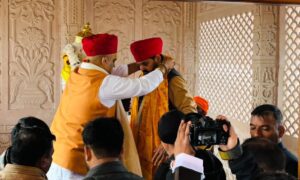Lunar New Year, commonly known as Chinese New Year, is a significant festivity celebrated in various countries throughout Asia and the world. However, the customs, traditions, and even the date might differ according to the country. Here, we explore how different countries in Asia usher in the Lunar New Year and highlight the uniqueness of each celebration.
China: A Grand Showcase of Tradition
China, the birthplace of the Lunar New Year celebration, has the most elaborate festivities. The celebration lasts for 15 days, beginning from the first day of the lunar calendar and concluding with the Lantern Festival. Activities include cleaning homes to sweep away bad luck, giving red envelopes (hongbao) filled with money for good luck, and enjoying sumptuous reunion dinners with family. The grand parades, lion and dragon dances, and the use of firecrackers are prominent aspects of the celebration.
Vietnam: Tết Nguyên Đán
Vietnam’s Tết Nguyên Đán, often simply called Tết, is a time for Vietnamese to pay respects to ancestors and welcome the Lunar New Year with family. Homes are cleaned and decorated, traditional foods like bánh chưng (a rice cake) are prepared, and ancestral altars are refurbished. Like China, red envelopes are also given to children for good luck. One unique tradition is the “First Footing”, where the first person to enter a home after midnight determines the household’s fortune for the year.
Korea: Seollal
Seollal, the Korean New Year, is one of the most important traditional holidays in Korea. Spanning three days, it includes the day before, the day of Seollal, and the day after. Koreans perform ancestral rites known as “charye”, dress up in traditional costumes called “hanbok”, and play folk games. Tteokguk, a rice cake soup, is consumed, symbolizing another year added to one’s age.
Malaysia & Singapore: A Melting Pot of Cultures
In Malaysia and Singapore, where diverse ethnic groups coexist, Lunar New Year is celebrated predominantly by the Chinese communities. Homes and streets are adorned with red lanterns and decorations. Lion and dragon dances are performed in public spaces, and “lo hei” or the tossing of the yusheng salad, is a popular activity, symbolizing prosperity and good fortune.
Does Japan Celebrate Lunar New Year?
Interestingly, while many countries in Asia observe Lunar New Year, Japan does not. The Japanese once celebrated the Lunar New Year before the Meiji era, but they adopted the Gregorian calendar in 1873 and began celebrating New Year’s on January 1st. If you are curious to delve deeper into Japan’s unique New Year customs or wonder why they do not celebrate it anymore since the late 19th century, you can read this post read this post here.
The Beauty of Diverse Celebrations
While the essence of celebrating a new year remains consistent, the rituals, customs, and activities vary widely across Asian countries. This diversity showcases the rich tapestry of cultures and traditions that make Asia a fascinating continent. As Lunar New Year approaches, it offers an opportunity for reflection, renewal, and a fresh start. Regardless of how it’s celebrated, the core spirit of hope and unity prevails.



































